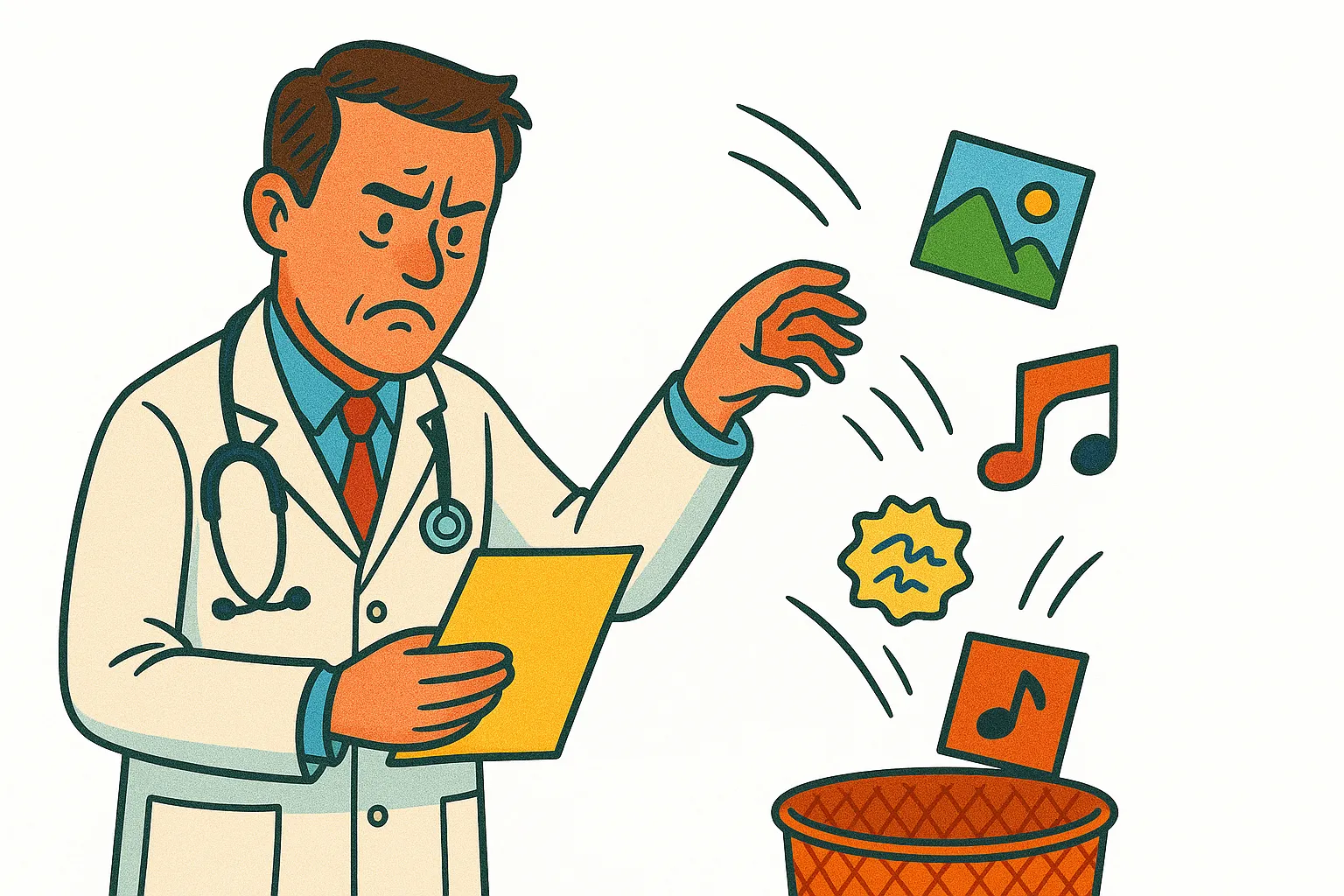Data Left Behind: AI Scribes’ Promises in Healthcare

We’ve talked a lot about how technology is transforming healthcare. From ambient listening devices to voice-based assistants, we’re seeing a data explosion. This shift (what many call a “data revolution”) is especially visible in the rise of AI scribes: tools that automatically generate clinical notes from doctor-patient conversations.The promise is big: faster diagnoses, more personalized care, and a lighter admin load for clinicians. But there’s a catch: most of this data never gets used.
The Big Promise… and the Big Challenges
AI scribes are designed to ease documentation fatigue, freeing providers from the hours spent typing into EHRs and allowing more time with patients. They also aim to create clearer, more detailed records. Sounds great, right? But putting this into practice is harder than it sounds.
- Accuracy: Clinical language isn’t standardized. One doctor might say “heart attack,” another might say “MI,” and a third prefers “myocardial infarction.” Add in accents, shorthand, and varying speaking styles, and you’ve got a tough challenge. Doctors don’t want to waste time fixing AI-generated notes, they want a tool that just works.
- Workflow Integration: These tools can’t just spit out a block of text. Notes need to fit seamlessly into the EHR, triggering follow-ups like lab orders or referrals. They also need to handle real-time input, like identifying who’s speaking, dealing with interruptions, and updating the record quickly enough to be useful during or right after a visit.
- Context: Medical conversations are full of nuance. A phrase like “denies chest pain” means the opposite of “has chest pain”, but a system that relies on simple keyword spotting could easily get that wrong. Abbreviations, shorthand, and conditional statements trip up traditional transcription tools, leading to missed details or false positives.
- Data Silos: Even if you capture everything, health data often lives in isolated systems. One patient’s history could be scattered across five databases. Add in inconsistent documentation, missing metadata, and strict data policies, and it’s easy to see why pulling everything together feels impossible.
Now, combine all of that with the risk factor: many existing speech-to-text or transcription services send audio to the cloud, which can make hospitals uneasy, since health data is entangled in a maze of red tape, usage restrictions, and compliance checklists. These constraints don’t just slow things down; they often prevent organizations from engaging with unstructured data at all.
With that, it’s no surprise that 97% of healthcare data is discarded because of these complexities. What’s left is a dataset full of gaps (like Swiss cheese) creating blind spots in clinical care and research.

What If We Could Actually Use That Data?
Health data is messy. But that’s exactly why structuring it matters. Here’s what becomes possible when you do:
- Better Note Content, Less Proofreading: Private AI’s Named Entity Recognition (NER) understands medical terms, jargon, and the shorthand doctors actually use. It doesn’t just transcribe words, it understands what they mean. That means fewer mistakes, less editing, and more trust from clinicians. If the AI gets it right the first time, doctors are more likely to rely on it.
- Safer, Smarter Data Use: Scientific breakthroughs depend on data, but only if it’s accurate and safe to use. Older de-identification tools often over-sanitize or miss key identifiers. Private AI uses advanced, context-aware transformation to spot even subtle identifiers without stripping away the clinical meaning. You keep the value while reducing the risk.
- Connecting the Dots: Private AI’s NER goes beyond entity extraction: it maps relationships. It connects symptoms to diagnoses, medications to side effects, and instructions to the right context. That way, nothing gets lost in translation. You get a clear, accurate picture of the full patient story, which helps clinicians make better decisions and reveals richer insights.
Bringing Data Out of Hiding
The best part? We already have the tools to unlock this value—without compromising privacy or losing context. Here’s how:
1. Find It: Use health-specific NER to spot relevant details across any format—text, audio, images—in multiple languages.
2. Extract It: Apply precise de-identification that protects privacy without losing meaning. (Think “Patient Michael Hodgkins” vs. “Patient has Hodgkins.”)
3. Transform It: Turn messy notes and legacy files into clean, structured formats that are ready for AI, analytics, or sharing.This isn’t just about cleaning up data. It’s about unlocking the insights that improve care and speed up research.The data is already there. So is the value.





































































































